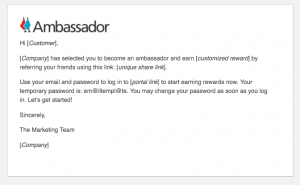As an online publisher, you want your content to do more than just drive traffic – you have bills to pay. That content needs to be monetized, and online advertising is one way to do this.
Setting up your own “ad stack” is a great way to gain more money for your website while having more control over advertising and sponsorships.
Why Sell Ads Directly?
If you have a website that you would like to more effectively monetize, you may be considering going beyond Google AdSense. AdSense has its benefits: It basically runs itself, and you can have a somewhat reliable source of income for your website.
- Google AdSense Has Limitations
Unfortunately, Google AdSense has its drawbacks. Google controls the bids, so you may have ad space being sold for less than you feel it is worth.
And, while you do have some control over the ads shown on your website, sometimes this happens after the fact. You see an inappropriate ad coming through AdSense (perhaps a competitor), and then only after it has already been shown can you block it.
- You Can Earn More with Your Own Sponsorships
As a publisher, you can simply earn more per ad space when you sell the advertising yourself. While you do have to consider the costs of potentially hiring a salesperson and setting up any reporting and ad serving software, you do not have to pay out a lot of commission to an ad network like Google.
If you have a small, niche-oriented website, you can often find loyal advertisers who are willing to pay monthly for ad space on your website. You may not have the big numbers in traffic Google wants in order to make a mint off of AdSense, but you have market certain advertisers want to reach. You will get more from selling them ad space and sponsorships directly.
You may not even need a salesperson to do this – many “thought leaders” and influencers who run successful blogs are able to work with a few strong sponsorship partners without hiring additional staff.
4 Tips for Developing a Strong In-House Ad Strategy
Getting set up with your own in-house online ad sales can be challenging, but it can also be well worth it. Here are some key points to consider when developing your ad strategy:
- Choosing the Right Ad Partners
When looking at your online ad strategy, consider diversifying so you don’t have all your eggs in one basket. At the same time, you don’t want your ad partners to be cannibalizing each other. Whether you choose to work with a DSP (demand-side platform) to handle your ad bids or work with a specific network or two, you will want partners that bring unique strengths (and advertisers) to the table.
- Setting Up Onboarding
When you get a new advertiser, you will want to have a system set up to properly “onboard” them. This may include contact information, payment accounts, and ad creatives. Some of this onboarding may be bundled with the ad delivery software you are using.
- Having Strong Reporting
Assessing ad server software can be dependent on the platform you are running. For example, you may choose to run ads through Google’s DoubleClick platform. However, many sites running WordPress choose to run ad serving software built specifically for the publishing platform. Some of these WordPress ad serving plugins, such as Ad Inserter, have free versions.
Be aware, however, that strong reporting is critical to keep your sponsors happy. The more sophisticated your advertising sponsor, the more granular they will want their reporting. A small business owner may be satisfied with just knowing how many clicks their ad has gotten, but other advertisers may want more detailed information, such as location and demographics of potential customers.
Therefore, make sure you have reporting in mind when you choose your ad serving platform.
- Invoicing and Payments
What’s the point of having sponsors if they aren’t paying you? And, you need them to pay on time, right? Remember, most ad serving software and solutions won’t handle the issue of billing for you. You will need to have a system set up by which your regular sponsors and recurring advertisers are charged.
Before considering an ad exchange for implementation into your ad stack, discuss with them how their billing works. One big challenge that publishers have with advertising partners is their payment efficiency. Ad partners may have thousands or hundreds of thousands of publishers they supply ad inventory to and then have to track, report and pay out on. There are a number of things you need to ask a potential ad partner about how their publisher payments work before you implement them into your ad stack.
- What are their payment terms?
- Do they offer early payment options?
- Do they have detailed reporting on impressions, CPM’s?
- How quickly do they reconcile these reports?
- Ask for references from existing clients who use them to find out if they always pay on time with transparency.
Ideally these partners are using an automated payment solution to send out and keep track of invoices for their accounts. As a bonus, some of these automated systems can also help streamline the onboarding process.
Your Website Can Make More Through Advertising
With the right combination of people power and technology, your website can earn a lot more revenue. Go beyond Google AdSense to create your own advertising ecosystem today!
Digital & Social Articles on Business 2 Community(28)






